

Preserving the Craft of
Wooden Furniture
So Byung-jin, Carpenter and Important Intangible
Cultural Property No. 55
So Byung-jin has been making wooden furniture for more than 50 years.He has dedicated an entire decade to the restoration of traditional furniture.Proclaimed an Important Intangible Cultural Property,he spends 12 hours a day working on his next masterpiece.“I have always been and always will be a carpenter,” he says.
Written by Cha Seung-jin, Editor Photographed by Studio Kenn
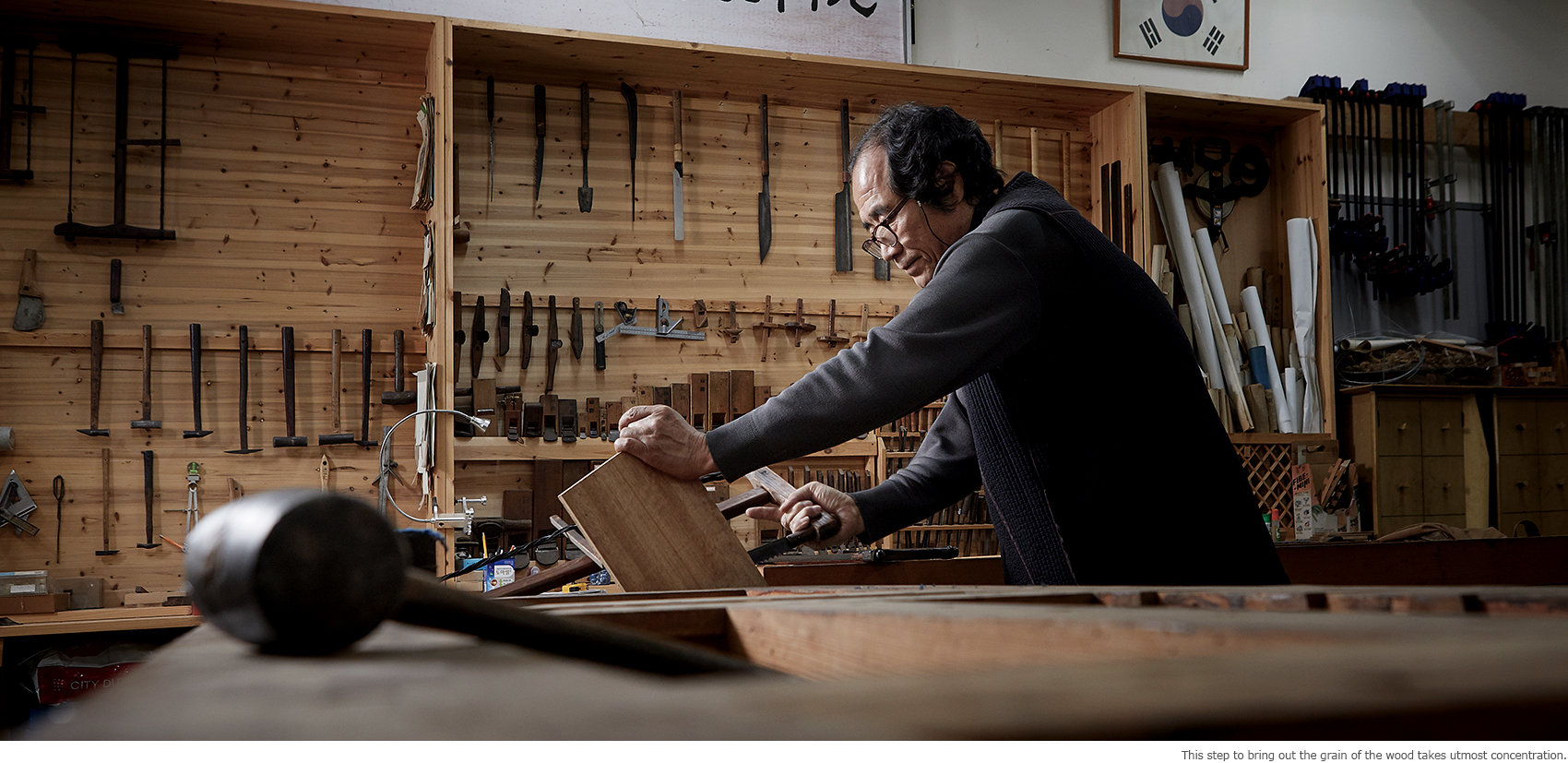
Boy Meets Wood
The carpenter So Byung-jin was born in Yongjin-myeon, Wanju-gun, Jeollabuk-do, in 1950. He lived in a village where people shared the same last name and came from a family of carpenters, beginning with his great-great-grandfather. His father was a carpenter who specialized in traditional wooden structures, but So Byung-jin dreamt of becoming a public prosecutor. At the age of 15, however, when his family could not afford to send him to school, he picked up a hammer and plane.
“I’m the middle kid among seven. Even though I had to stop studying, I wanted to earn money to support my younger siblings. A relative introduced me to Jeonju jungang furniture, where I picked up the art of somok carpentry. Somok refers to the art of making wooden furniture, including wardrobes, chests, dressers and desks. Those skilled in somok are called somokjang. It wasn’t easy, but I worked late into the night to hone my skills.”
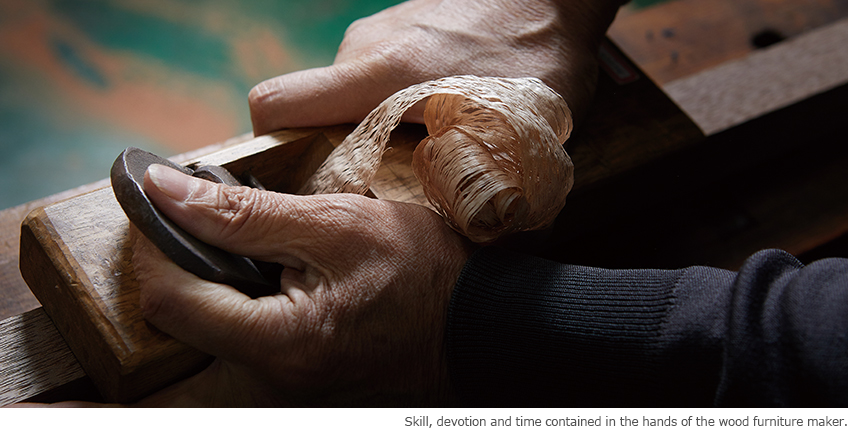
So Byung-jin worked relentlessly from the day he first held a plane in his hands. He mastered key skills in just two and a half years, when it would take others at least 10. In 1971, he won a silver medal in the furniture-making category at the World Skills Jeonbuk competition.
The master carpenter under whom he studied recognized his talent and recommended him to the Seoul Dongil Furniture shop.
“At that time, Seoul Dongil Furniture was the best workshop in East Asia. It was the dream workshop for many. I headed up to Seoul with the goal of making a name for myself as Korea’s best carpenter.”
At Dongil Furniture, So Byung-jin grew into a master carpenter while learning from the best. He expanded his woodworking knowledge and gained experience in using manufacturing equipment.
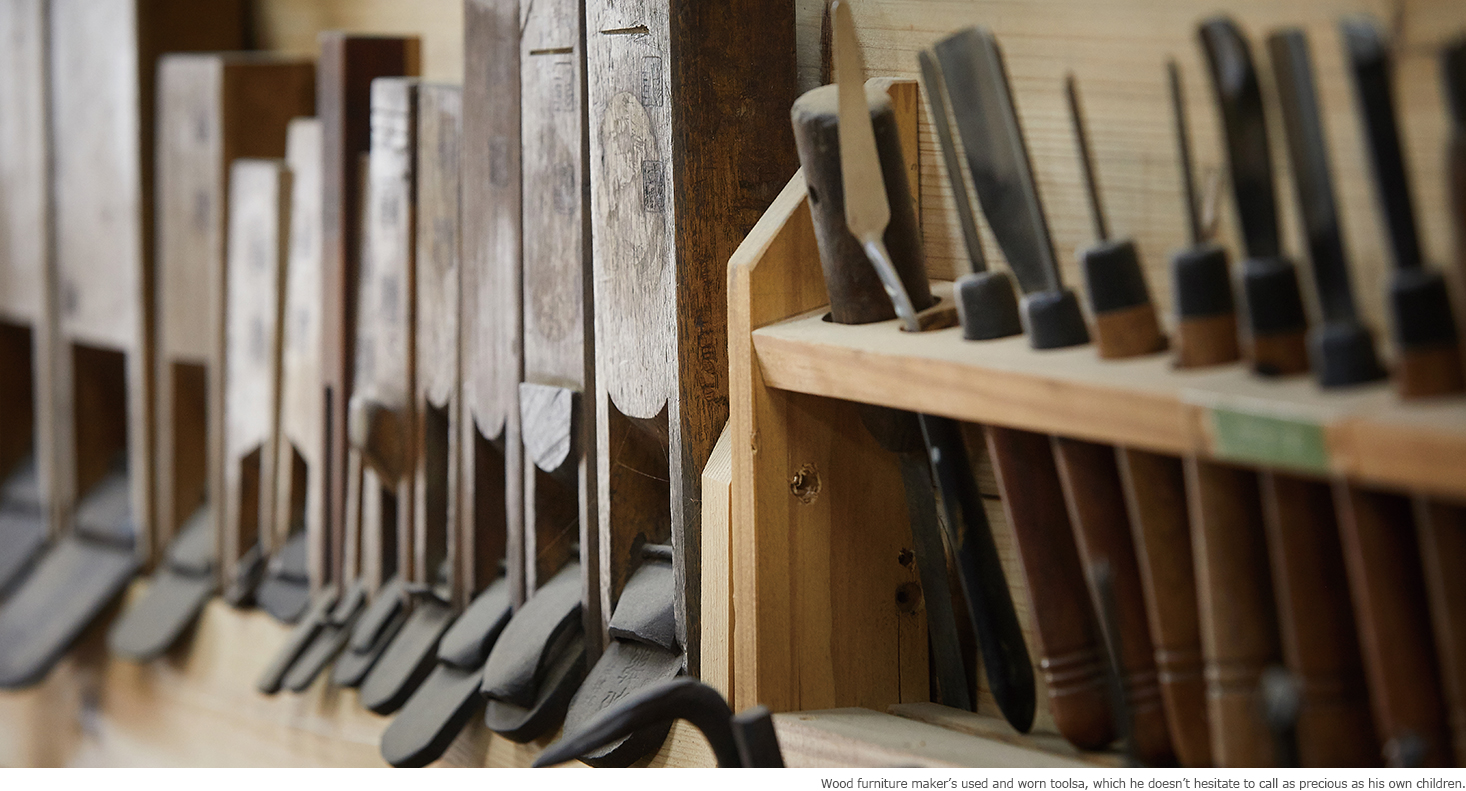
Restoring Jeonjujang, the Heart of
Korea’s Traditional Wooden Furniture
Life in Seoul had another surprise in store for So Byung-jin. One day, while walking down the street in Insa-dong, he came upon a traditional chest called a jeonjujang. This was a turning point in his life.
“I entered an antique store, and there it was. I just couldn’t take my eyes off it. I was surprised when I heard it was made 200 years ago in my hometown. That’s when I decided to do my part to pass on the legacy of jeonjujang.”
Jeonjujang is known as the heart of Korea’s traditional wooden furniture. Sophisticated and elegant-looking, it’s the representative form of Korean furniture from Joseon days. Unfortunately, jeonjujang was gradually forgotten with the decline of Joseon. So Byung-jin did everything he could to restore pieces of jeonjujang antiques scattered across the nation. He visited museums, antique shops and the houses of individual collectors. He took photographs of each jeonjujang piece and kept a detailed record of their characteristics. After a decade of hard work, he won a presidential award at the 29th Korea Annual Traditional Handicraft Art Exhibition for his restoration of jeonjujang.
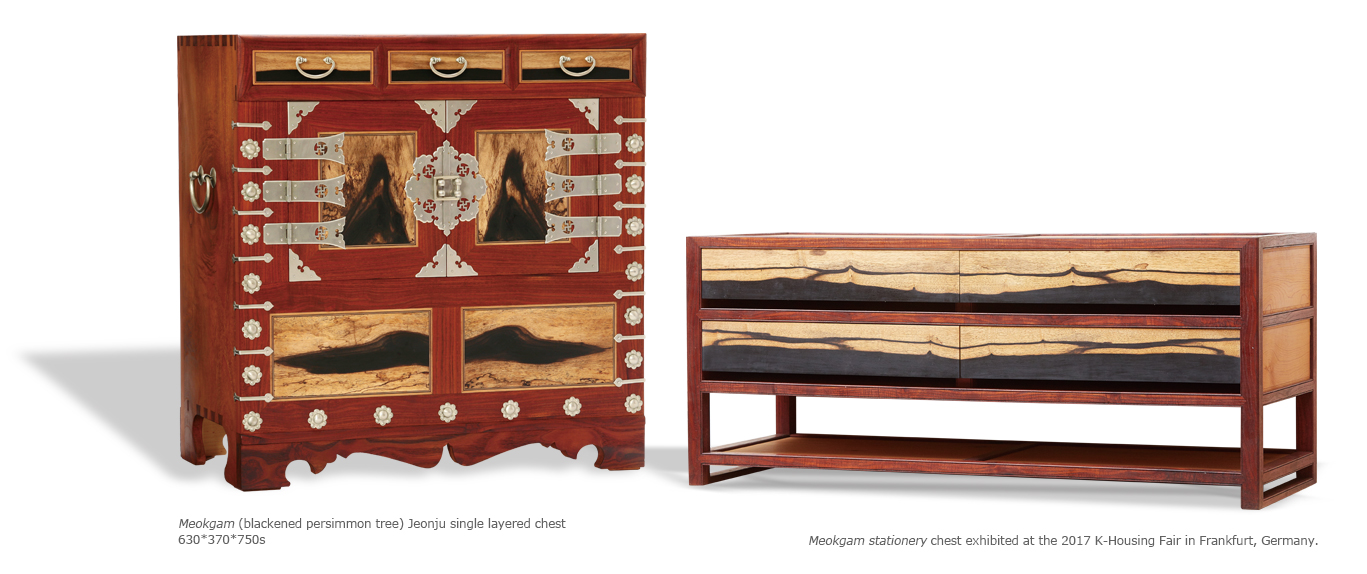
“Jeonjujang witnessed the birth and demise of Joseon. It’s a reflection of our history and unwavering spirit. As a carpenter, it was my good fortune to discover jeonjujang.”
So Byung-jin has a deep affection for all pieces of jeonjujang woodworking. Today, he is still actively making jeonjujang and other types of traditional wooden furniture. These efforts have won him numerous awards, including three presidential citations in 1992, 2001 and 2007. In 2014, he himself was designated as Important Intangible Cultural Property No. 55 Somokjang. Artisans who hold this title are intangible cultural assets of high historic, scholarly and artistic value in fields such as drama, music, dance and handicrafts. Last year, So Byung-jin contributed to raising international awareness of traditional Korean wooden furniture by participating in the K-Housing Fair in Frankfurt, Germany.
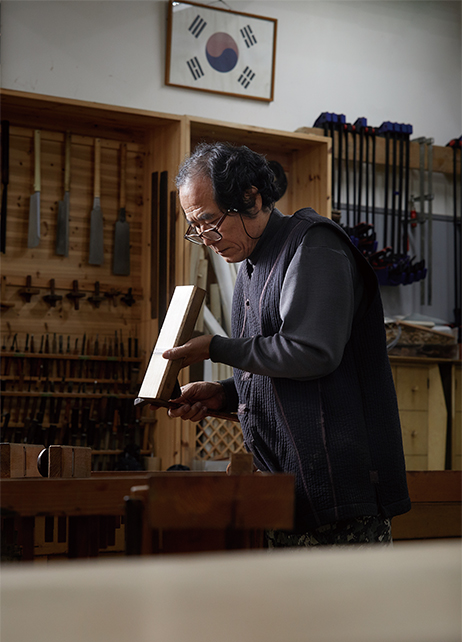
-
So Byung-jin Profile
Korean Cultural Properties Craftsman Association & Guest Professor, Traditional Culture Teaching Center at Korea National University of Cultural Heritage
 1992Presidential Citation; Designated Furniture Maker No. 1 by the Korea Master Hand Association
1992Presidential Citation; Designated Furniture Maker No. 1 by the Korea Master Hand Association 2001Presidential Citation
2001Presidential Citation 2004Ministry of Labor Citation
2004Ministry of Labor Citation 2004Presidential Award at the 29th Korea Annual Traditional Handicraft Art Exhibition
2004Presidential Award at the 29th Korea Annual Traditional Handicraft Art Exhibition 2007Presidential Citation
2007Presidential Citation 2012Designated Provincial Intangible Cultural Property No. 19 by Jeollabuk-do
2012Designated Provincial Intangible Cultural Property No. 19 by Jeollabuk-do 2015Designated National Important Intangible Cultural Property No. 55 Somokjang
2015Designated National Important Intangible Cultural Property No. 55 Somokjang
Breathing Life Into Wood
So Byung-jin delved into the profession at a young age and has accumulated more than 50 years of experience. Nevertheless, he still finds it challenging. Because he sticks to using traditional tools and relies on his two hands, he’s only able to make five pieces of jeonjujang per year. So he refers to woodworking as the art of waiting.
“To make a good piece of furniture, it’s important to have the right skills and materials. Wood used to make traditional chests is left to dry outdoors. This drying process alone takes 10 years. From that moment in Insa-dong when I fell in love with jeonjujang, I started to collect dead bark off of zelkova trees. People asked why I collected dead wood, but what they didn’t realize is that I have been waiting for much longer to pick up such pieces of wood.”
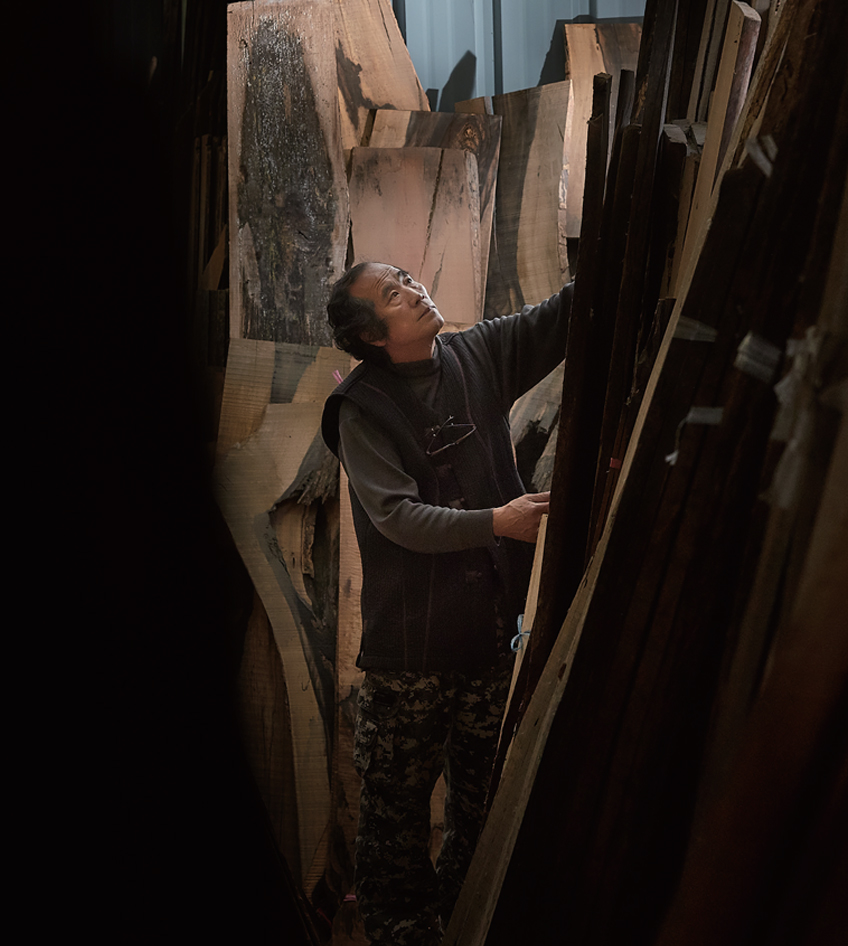
Traditionally, ottchil coatings are not applied to jeonjujang. The front of the chest is decorated with a natural wood grain pattern called yongmok, which develops only in old zelkova trees. Yongmok, which literally means “dragon eyes,” was named such because of its resemblance to a dragon’s eye.
“Yongmok is the traces left behind from a tree’s struggle with death. That’s why people regard jeonjujang as the result of life breathed into dead wood. To get yongmok patterns, you need to use zelkova trees that are at least 500 years old.”
Yongmok is the discovery of beauty amidst pain. The intricate, entangled patterns serve as a reminder of the difficulties that the carpenter had to overcome in the restoration of the piece of jeonjujang woodworking. So Byung-jin says that he has always been and always will be a carpenter. He hopes to preserve the craft of making traditional wooden furniture, passing it down to future generations for many years to come.
Other Articles




Jejudo Island

Carpenter and Important Intangible Cultural Property No. 55

A Universe of Their Own

Signpost to Lasting Peace


without the Beef, Please

the Pulse on the Young
Application of subscription
Sign upReaders’ Comments
GoThe event winners
Go


 April 2018
April 2018



